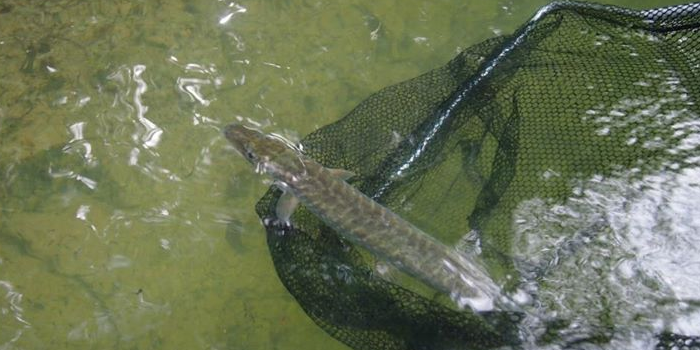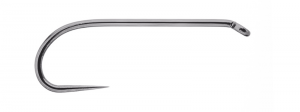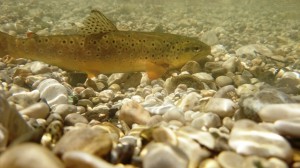Improve your catch and release practice
Catch and release practice is well known among fishermen all over the world for quite some time. That being said, its popularity has exceeded in the latest years, but so has the clash of opinions and beliefs, which has been going on for a long period of time.
I decided to write this blog because I wanted to contribute to improvement of catch and release practice; I have been noticing growth of mistakes and negligence all over the internet and magazines.
This subject has been researched, studied and presented in many forms (magazines, blogs, et.), but we can still find many fishermen who don’t know the basics or just don’t want to practice catch and release the proper way. So as we transition from the end of the season for Danube salmon (huchen/Hucho hucho) and pike into the start of fly fishing season for trout (species which is especially sensitive to handling), I would like to urge all the fishermen in better implementation of catch and release practice.
The fact is that many fishermen think that their methods are correct and that their implementation of the C&R does nothing wrong. Let alone that they would think about the possibility that the fish which were returned to water, died as a result of their conduct. Most fishermen are not aware of this as the fish is no longer seen after release.
Numerous studies have shown high mortality rates during the practices of C&R, especially in sensitive fish (e.g. trout). Problems or in some cases death, may sometimes occur a few hours or even days after the release. This usually occurs due to excessive stress, which fish experience during landing and handling. The most common mistakes in Catch and release practice are:
- exposure to air (according to some data, the mortality of fish which are out of the water for 30s is around 38% and as much as 72% for 60s)
- raising the fish from the water immediately after capture (imagine that you are immersed in water immediately after 100 m sprint)
- excessive landing time (using “light” equipment)
- improper handling and organ damage (damage inflicted with contact of the gills and damage of internal organs due to hard squeeze)
- using hooks with barbs
- raising the fish by the jaw
- use of unsuitable nets
- laying the fish on the floor
- release of the fish in other locations
All of these mistakes increase their effect during high temperatures. Deaths and injuries also depend on: the size and condition of fish, depth and type of hooking, shape of the hook, number of times that the same fish has been caught, as well as the proximity of predators. However, Vladimir Mikec also added: “Even in winter, the fish are subject to replacement of energy that they have spent during landing and handling time. Since its body is adjusted to the winter water temperature (stage of numbness and slow digestive), the energy input is much smaller and more hampered than in summer, when everything works 100%. ”
So if we choose C&R practice, we have to perform it as correctly as possible. The best way of C&R practice has shown to be fast landing and unhooking of the fish in water without touching. In case we decide to net the fish or even take some photos the best thing is to follow next tips:
- use the equipment which is appropriate for the size of fish (rods, reels, lines …)
- land it fast (it’s better for the fish to snap the line than to die of exhaustion)
- keep the fish in the water
- remove the hook as quickly as possible and without the use of excessive force (use small pliers)
- use one barbless hook
- use the hooks that are more curved than conventional “J” hooks
- if you want to take a photo of the fish it’s better to leave it in the net for a few moments, so it can catch some “breath” before you take it out of the water
- fishing nets should be made out of high quality material, which causes minimal damage
- fishing net and hands should be wet before contact
- in case of deep hooking the line should be cut (not pulled out with force)
- if the fish is showing signs of exhaustion help it by grabbing it by the tail and gently move it back and forth through water so it can get more oxygen through gills
- take care of the fish by not dragging it over rocks or other rough surfaces
In conclusion, I would like to add that C&R practice takes some toll from fisherman, who must expect it, if he decides to use that method. Here I have in mind a certain % of mortality of the fish that are released, fewer photos and lower number of fish caught because of barbless hooks. Otherwise, it is better for both fish and fisherman, that he practices Catch and take.
Literature:
- J.M. Meka, S.D. McCormick / Fisheries Research 72 (2005) 311–322
- Aaron Bartholomew & James A. Bohnsack / A review of catch-and-release angling mortality with implications for no-take reserves (2005)
- Martin Joergensen / Catch, kill, release or not fish at all? A personal view on C&R.
- http://myfwc.com/research/saltwater/fish/snook/reduce-catch-release-mortality/
- http://www.acuteangling.com/Reference/C&RMortality.html
- http://www.gofishbc.com/how-to-fish/fishing-articles/catch-and-release.aspx
- Alex Boodrookas / Just Throw Them Back: The Ethical Dilemma of Catch-and-Release Fishing (2006-2007)
- Morgantown Dominion Post / Ban on Catch-and-Release Fishing Now In Place In Europe (2008)
- Jim Shepherd, The Fishing Wire / Switzerland Bans Catch-And-Release Fishing



